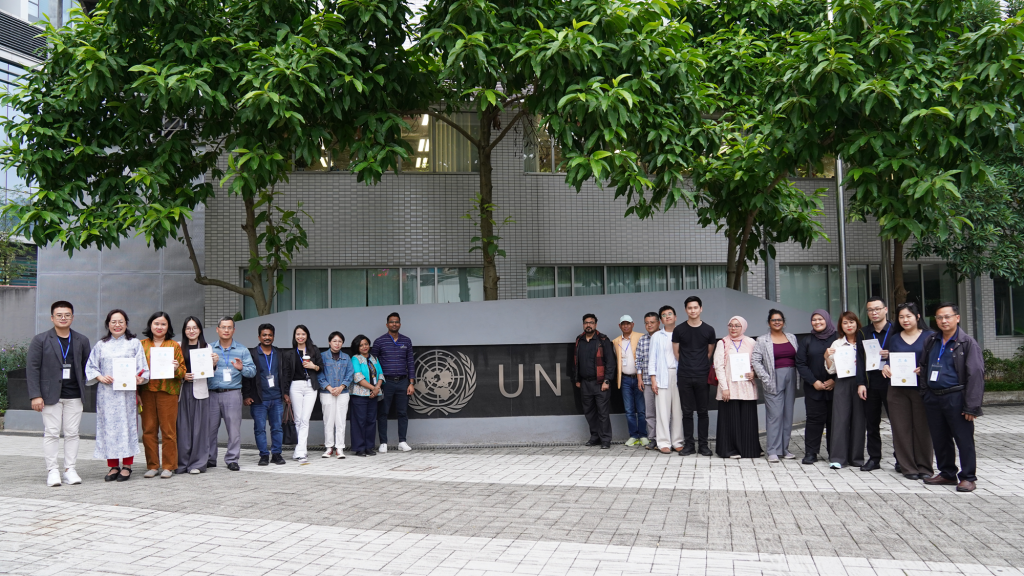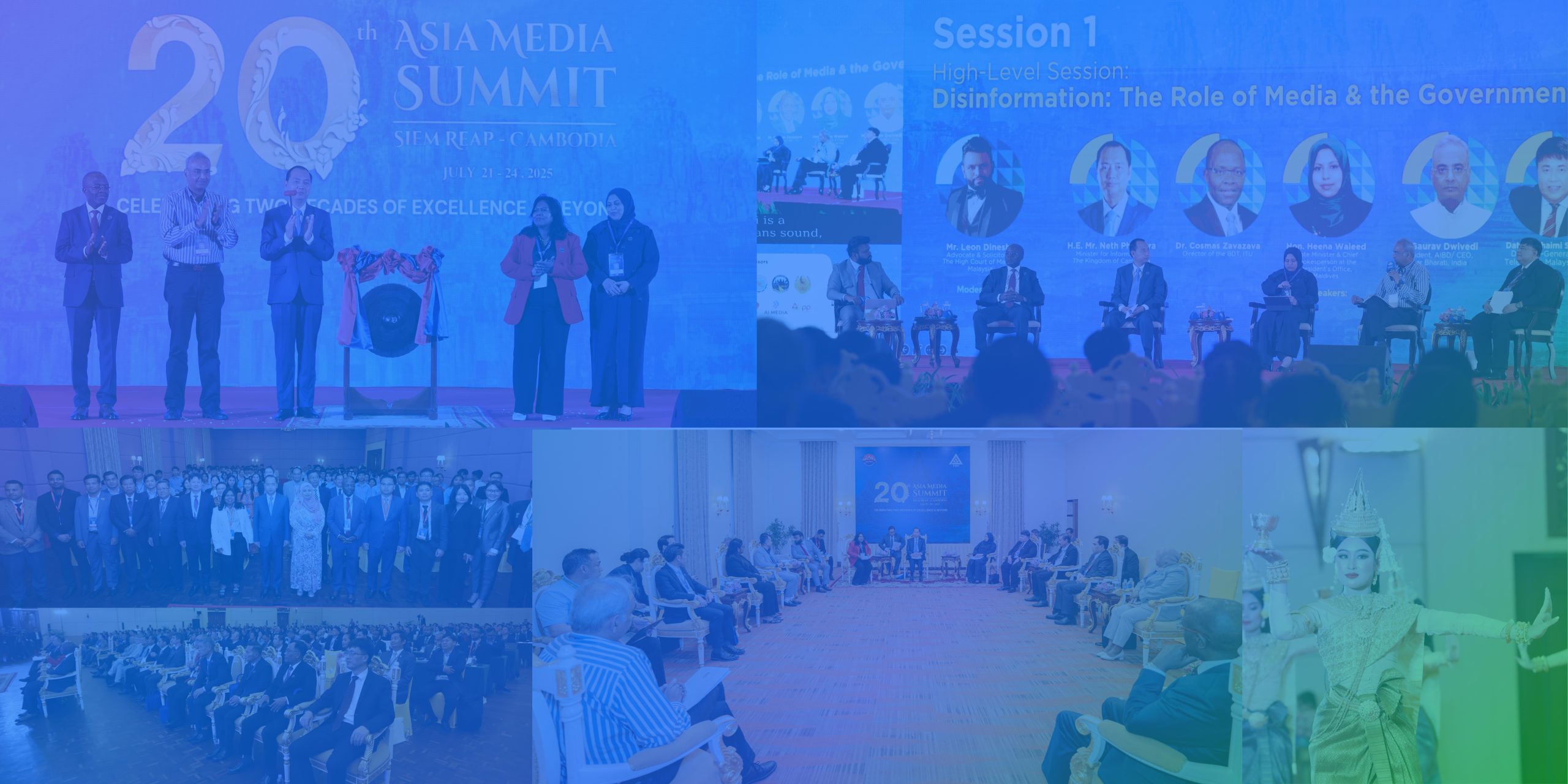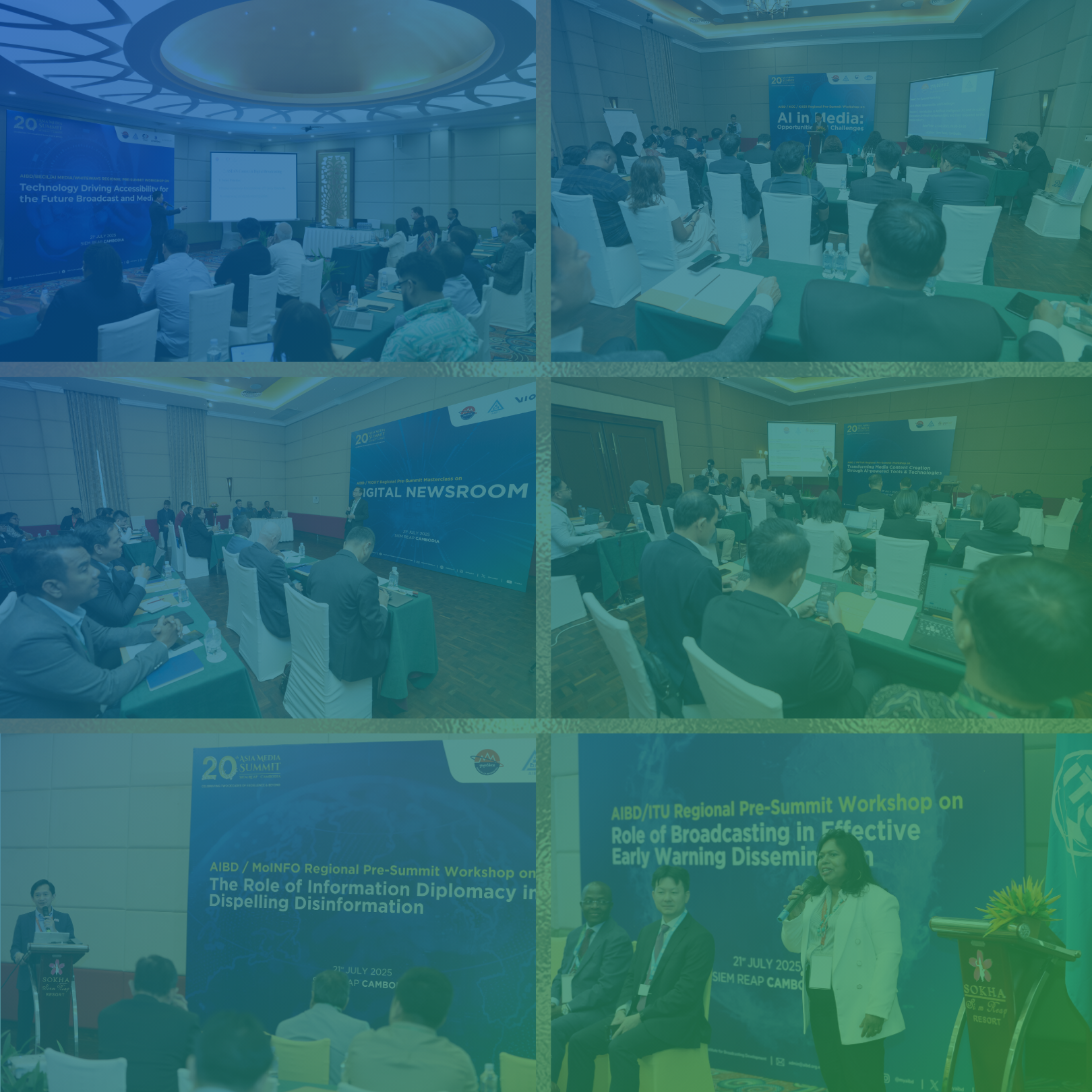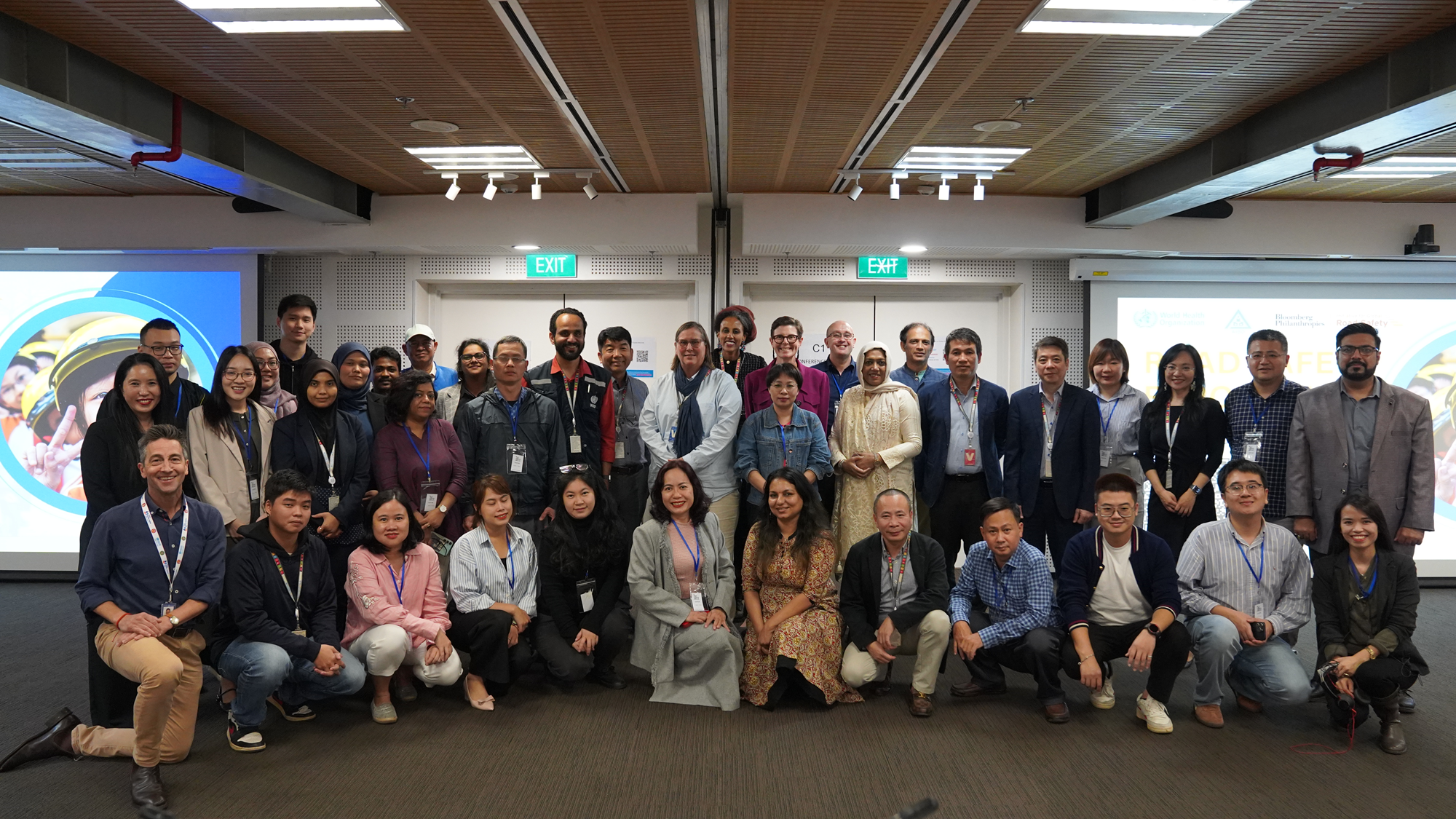
Reporting to Save Lives: AIBD–WHO Regional Workshop on Road Safety Reporting, Hanoi
Hanoi, Viet Nam | 3–5 November 2025: Journalists from five Asian countries came together in Hanoi this November to learn how their storytelling can save lives. AIBD, in collaboration with the WH and with support from Bloomberg Philanthropies, organized a three-day Regional Workshop on Road Safety Reporting at the Green One UN House, Hanoi, Vietnam.
The workshop gathered 21 journalists from China, India, Bangladesh, Malaysia, and Viet Nam, aiming to strengthen reporting on one of Asia’s most pressing yet often overlooked public health challenges, road safety.
Day 1: Framing the Crisis, Changing the Story
The opening session set a powerful tone. Dr Angela Pratt, WHO Representative in Viet Nam, reminded participants that road crashes claim 1.2 million lives every year, with Asia accounting for more than half. “Journalists can save more lives through their stories than doctors can in hospitals,” she said. “The way you frame a story shapes how politicians and policymakers think about road safety, and that thinking determines what action follows.”
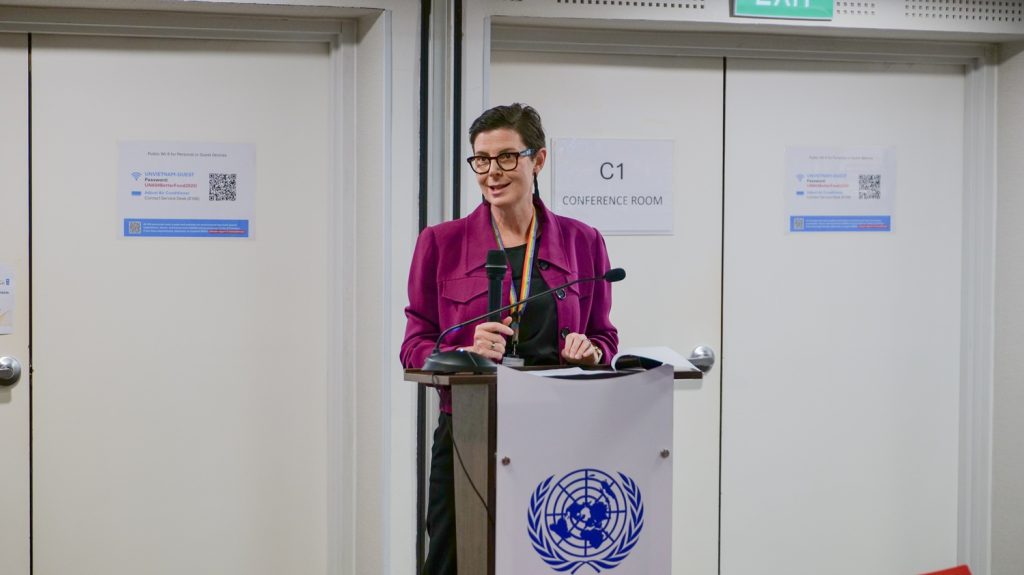
Joining her on stage, Mr Le Kim Thanh, Executive Vice Chairman of Viet Nam’s National Traffic Safety Committee (NTSC), shared Viet Nam’s steady progress in reducing motorcycle fatalities through better enforcement and safer infrastructure, while acknowledging that “public awareness remains the hardest battle.”
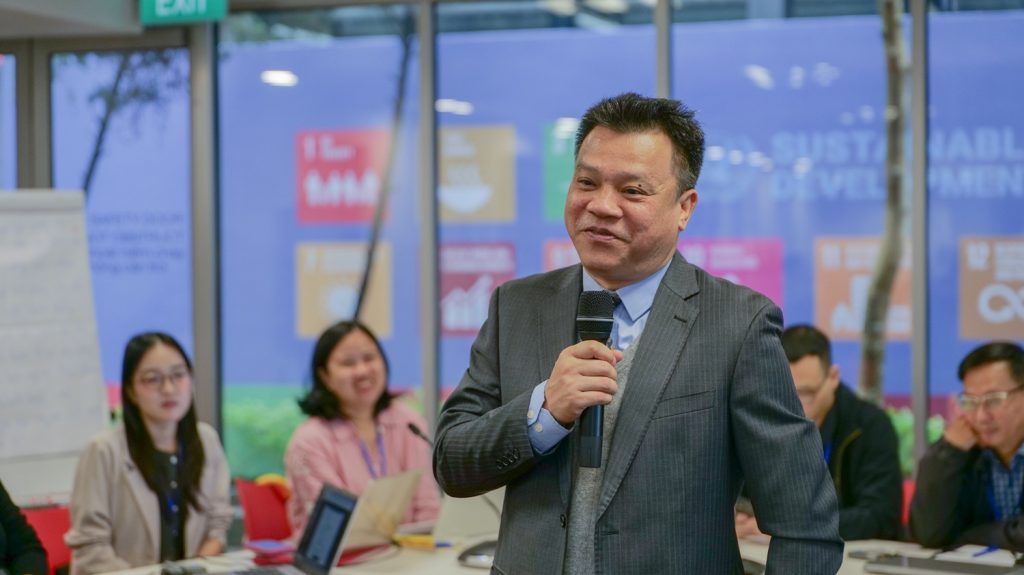
Later that morning, Dr Nhan Tran, Head of Safety and Mobility at WHO, provided a global overview of trends and data. His session, “Safe and Sustainable Mobility: A Primer,” challenged participants to view road crashes not as random events but as predictable and preventable outcomes of weak systems.
Dr Tashi Tobgay, WHO Regional Advisor on Disability and Injury Prevention, followed with “Road Safety in Asia: Key Issues and Trends.” He underscored the need for evidence-based coverage and cross-sector collaboration.
A panel discussion featuring WHO representatives from China, India, Bangladesh, Malaysia, and Viet Nam brought the conversation closer to the ground. Moderated by Sidharth Pandey, WHO Communications Officer for Southeast Asia, the panel shared examples of how enforcement gaps, unsafe road designs, and economic pressures intersect to make roads deadly.
In the afternoon, Vietnam’s experience took center stage. Mr Tran Huu Minh and Prof Pham Viet Cuong from NTSC and Hanoi University of Public Health walked participants through decades of policy evolution that turned Vietnam into a model for motorcycle safety. Their insights bridged policy data with human behavior, a balance journalists were encouraged to capture in their own stories.
Kelly Larson, Director at Bloomberg Philanthropies, shared her presentation on the Bloomberg Initiative for Global Road Safety (BIGRS) and how data-driven strategies have helped countries lower fatality rates. “Every country that has changed outcomes started with changing the conversation, and journalists lead that change,” she said.
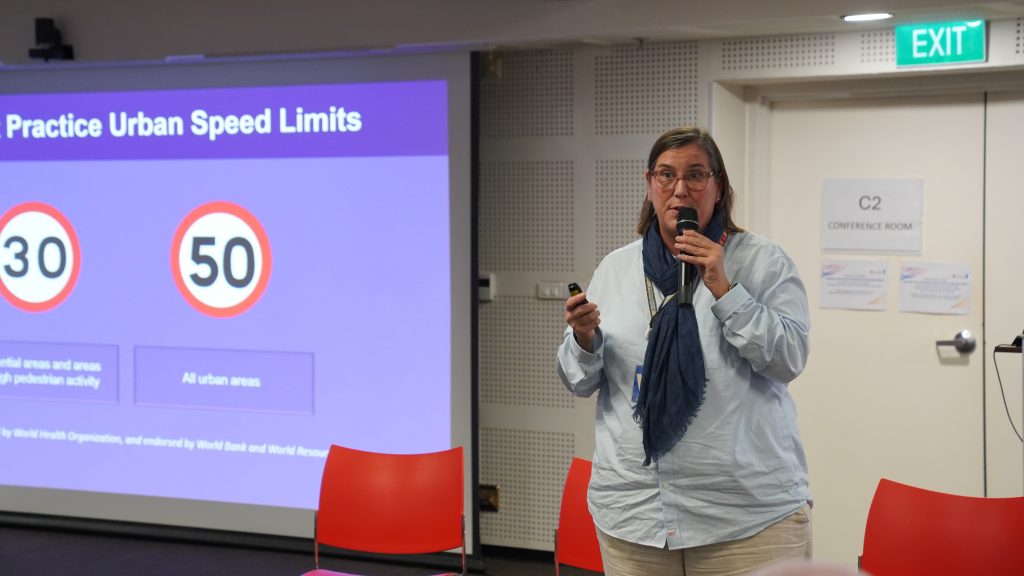
The day ended with an interactive exercise led by Nabeel Tirmazi, AIBD Programme Manager, titled “How Would You Cover This Crash?” Groups analyzed a mock road collision scenario, debating framing choices, sources, and headlines. The session underlined how subtle editorial decisions, like avoiding the word “accident”, can shift public perception from fate to accountability.
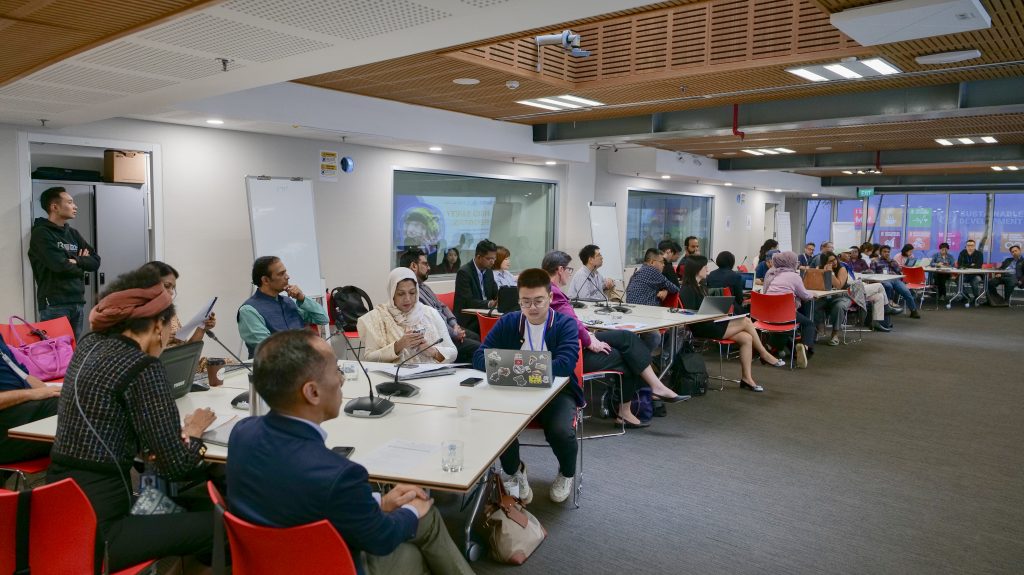
Day 2: From Problems to Possibilities
The second day focused on transforming facts into stories that inspire change. Opening the session, Tirmazi encouraged participants to “connect numbers to faces, and faces to systems,” setting the stage for a day about data, empathy, and solutions.
A dialogue on child road safety led by Dr Mohammed Asheel (WHO India) and Dr Tashi Tobgay underscored how young pedestrians and riders remain the most vulnerable. Participants discussed how to humanize policy issues without resorting to sensationalism.
Journalist Shahin Akter from Bangladesh’s New Age shared the daily newsroom challenges of keeping road safety stories relevant in fast-paced environments. Her honesty about audience fatigue struck a chord across the room.
The afternoon turned hands-on. Matthew Taylor, WHO Consultant, introduced Solutions Journalism, explaining how reporters can balance realism and optimism. “We don’t ignore tragedy, we pair it with evidence of what works,” he said.
This seamlessly led into Nabeel Tirmazi’s session on “Storytelling with Data.” Tirmazi demonstrated how open data portals, WHO datasets, and free visualization tools can make safety stories more engaging. Participants practiced building narratives around real-world statistics, translating spreadsheets into human stories.
The final session of the day, delivered virtually by Yolanda (Jinxin) Ma, Programme Lead for AI and Innovation in Journalism at the University of Hong Kong, explored how AI and social media can amplify road safety campaigns. Her message, “Technology should help journalists tell stories that heal, not harm”. resonated deeply.
The day concluded with a sense of purpose. Journalists left the room discussing collaborative ideas, cross-border podcasts, regional data series, and local helmet campaigns, all rooted in responsible journalism.
Day 3: Learning on the Move
On the third day, participants headed to Van Phuc Primary School in Ha Dong District to witness a Safe School Zone initiative in action. Children demonstrated how they learn road rules through songs, games, and drawings. The school teachers also highlighted the power of community in safegaurding children and giving awareness on this important issues. It was a reminder that prevention begins with education, and that road safety stories can be both hopeful and human.
After lunch, the group visited Voice of Viet Nam (VOV) TV, facilitated by AIBD. Here, they witnessed how local broadcasters use live CCTV feeds to report traffic conditions and educate the public. For many, it was a practical model of how media, technology, and public service can intersect.
The workshop ended back at the UN House with a joint debrief led by Matthew Taylor and Nabeel Tirmazi. Participants shared their takeaways and pitched upcoming story ideas. Several planned to investigate helmet compliance, infrastructure gaps, or data transparency in their own countries.
Nabeel Tirmazi closed with a simple reminder: “Good journalism isn’t just about what happened, it’s about what could happen differently next time.”8
The Road Ahead
As part of post-workshop activities, WHO and AIBD will support follow-up webinars and provide small story grants for in-depth reports. Participants will also join an active cross-country WhatsApp network to exchange stories, data, and visual resources, extending the workshop’s reach beyond Hanoi.
Speaking after the event, Dr Pratt reaffirmed WHO’s commitment to support journalists: “There are many more angles to cover, and many more stories to tell. Journalists have a crucial role in driving change, and we (WHO) are with you.”
For AIBD, this workshop reinforces its mission as a regional center for media development, translating global agendas into newsroom skills and regional collaboration. It also reflects AIBD’s growing focus on AI literacy, data storytelling, and solutions journalism, tools that can turn public health policy into human stories that matter.
By the time the final group photo was taken, the message was clear: road safety is everyone’s story , but journalists make it heard.
